-
Posts
372 -
Joined
-
Last visited
Content Type
Forums
Detector Prospector Home
Detector Database
Downloads
Posts posted by Gold Hound
-
-
12 hours ago, Jonathan Porter said:
I have one phrase in answer to all this, “Range of Motion”. Every target has its optimal coil movement which is coil height, coil windings orientation and coil speed relative to Ground Zero. You can call the speed “speed dependant” if you like as we are almost always talking about ‘Motion’ detectors. The range of Motion is dictated by the ‘lead in and tail out’, swing speed is dictated by ‘Range of Motion” distance, ground conditions and size of target relative to depth.
Once you get the “Range of Motion” worked out (that’s the distance measured between the start of the ‘lead in’ through GZ and out to the very end of the ‘Tail out”) then its just a case of massaging the swing speed and coil orientation to get the target signal to manifest properly compared to localised ground signal responses.
These things are all being performed by all detector operators even inexperienced ones, it’s part and parcel to the use of a modern gold hunting motion metal detector. I find it’s best to be aware of them but not try to force things because gravity is your best friend when it comes to control, kinetic energy is an amazing control once something is in motion.
In the case of the GPZ there’s a few factors to take into consideration when performing these tasks, first there is the visualisation and locking into memory information first experienced when the potential target was discovered, then there is the information pertaining to the Semi-Auto GB and how it interacts with said potential target, then there is the comparative information based on a locked or Manual GB pertaining to the target. All the while attention is being paid to swing speed, coil orientation, direction of sweep ect. The whole time this is going on I am doing my best to pendulum the coil in a smooth and controlled fashion over GZ, I let our beautiful world do the controlling part because she’s so much better at it than me. 😊
2 1/2 foot 2 ounce speci I massaged in with the help of planet earth and a good “Range of Motion”
I totaly agree with what you say about range of motion. This is the point I was trying to make earlier in the discussion.
Over the years I have noticed that all good operators have mastered this skill.
I solely focused on teaching my Wife Amber this skill in 2019 as she had never detected before. With careful guidence she was able to do very well, she found enough gold to make a decent living. By the end of season she ended up averaging 5g per day! this is very good for someone who had never touched a metal detector before. Credit to her though, she is very easy to teach and by the end of season she knew all the settings and was coming up with spots to go have a look at from my geology teachings. Im so greatful to have her😀
I focused on this because it is the core skill required to sucessfully use any metal detector. This really is what seperates the good operator from the average!
Do you use Manual Ground Balance much Jp?
I use it a fair bit, I've found in the right conditions that I can get a better target response on both long and short time constance targets using it.
Here is a nice long time constance bit I carfully massaged out of 900mm hard packed cemented alluvium... nasty stuff as it has a ferrous upper layer and calcium rich lower layer.
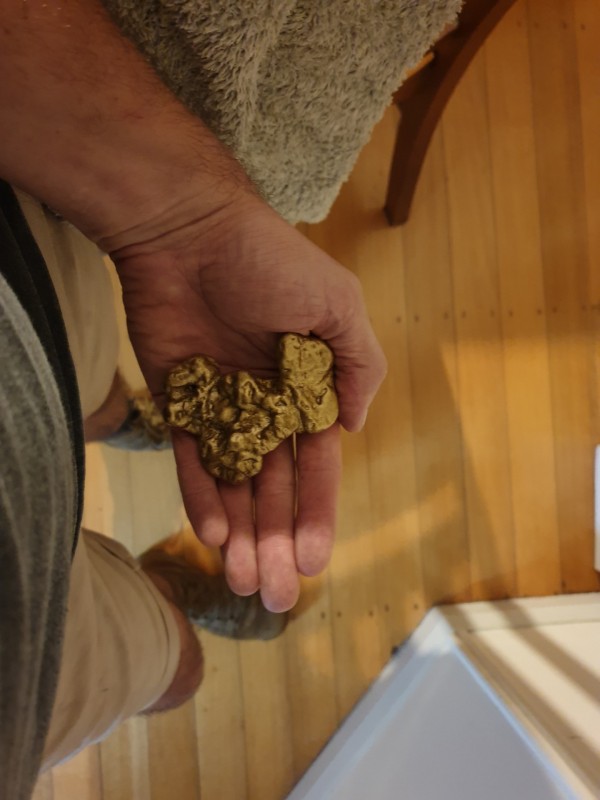
-
On 2/25/2021 at 1:27 AM, afreakofnature said:
Yes, I have read the manual. Over and over. Plus I have also done what Northeast has done and basically inserted a lot of DP, Knowledge Base and TreasureTalk articles based on a couple months of research. I have used the Z for about 3 years now too. I plan on posting this "revised" manual in the future for everyone to have. I am hoping it will be kind of like a wiki that others would want to add to so all the content is in one PDF. But before I do that I want to have a good "grasp" on how to adjust these controls for ZVT perfection (based on the ground you are in).
Hopefully some videos will roll in. Fingers crossed.
Sorry mate I didnt mean to offend or belittle you in anyway if it came across that way. Im mearly trying to stress the importance of the other things I was talking about, my dry aussie sense of humor dosent help either, went back and read my posts and can see how you could take offence from them sorry mate. I forget about the differences in aussie and yank comunication etiquette.
I thought from your post quoted above that you were compiling a revised more detailed form of manual. In my opinion injecting more detail and opinions into a manual just creates more confusion from any beginner who reads it. And after seeing your diagrams, that showed me you dont have a correct understanding of how the controls work. This prompted my post.
And videos are a lot of work to produce, so i wouldnt hold my breath waiting for them. I have over 1000 hours of recorded video of me prospecting/ finding gold that will never see the light of day, as it is just to much work compiling and editing for no return for me to bother with. Hopfully others have more time and can produce one for you?
Or maybe you could produce them yourself?
-
A tip for you mate.
You really need to experiment with different swing speeds and heights and be very controlled with it.
Perfecting your swing and undersanding its effect on targets and ground noise really is probably the most importaint part of becoming one with your detector.
Detetctors are like nice ladys... you need to learn how she likes to be swung, her curves and how to press her buttons.
-
31 minutes ago, afreakofnature said:
I am not saying that it modulates it just sets the maximum loudness limit of the volume control (well maybe I am calling it modulation). If it truly did clip it and you set the limit to 1 then crank the volume up to 20 everything would sound the same from high signals to low signals and probably all of the noise. But if you set the limit at 1 and crank up the volume to 20 you actually do get variations in the loudness still. I could be wrong but other pieces of electronics out there that has Volume Limit describes it in this matter, Minelab could be doing there own thing but that's confusing. IDK I can't test this yet, maybe we will get someone to try this in a video.
Im guessing that the clippers have a setting above the volume floor, it may start at say 5 who knows¿ the Ml tech that desighned the function obviously had the forsight to know that some one would run it at zero and wonder why the detector is not working lol. I can assure you that it dose not compress the sound in any way like you are thinking it might.
You are way over thinking this mate... just get out there and put some field time on your machine!
You probably need to do at least a full season detecting before you can write a manual, otherwise it is just ideas put together by some one who dose not have any field experince.
I can guarantee you that JP, Jasong, Nenad, others and myself have gained our knowledge from our time in the field and willing ness to experiment! For example I detectct all day, clocking around 8 to 12 hours a day for 8 months of the year since 2 months before the official release of the detector. That is quite a lot of field time if you add it up😉 I wear through 4 pairs of military boots per year doing so.
Please do not take this the wrong way mate, I like your enthusiasm... its a rare thing these days lol, but I just want you to understand how we earnd our knowledge. And if you want to aquire it for yourself there really is no subsitute. You just have to get out there and earn it for yourself!
-
1 hour ago, afreakofnature said:
more on Volume Limit:
This is how I see Volume Limit. It adjusts the maximum loudness (decibel) allowed out of the machine - OUTPUT. You still have 20 increments to work with on the Volume (Audio Boost) control, no matter what you set your limit too. It is just that each increment is exponentially greater based on increasing the limit you set. I think this is why people see Volume Limit as a volume control because if you set your limit to 20 and set the Volume control at 8, but then lower your Volume Limit to 10 and leave your Volume on 8, you can see that it would be equivalent to a 4 back at the Volume Limit of 20. Hence lowering the loudness heard. It is completely relative to the Volume Limit set.
If Volume Limit truly was a decibel cut off. Then it would look like this below. Where if you set your Volume Limit to 10 then on your Volume control you would have no change from 11-20. But this is not true, loudness does still increase, even with a limit set. Therefore the way I see it Volume Limit can lower the maximum volume (loudness, decibel) overall, but does not cut it off. Think about it, if you had a loud target cut off at 45 decibels but kept raising the volume regardless then even the faint sounds (and noise) could be as loud as 45 decibels. Making everything sound the same. This does not happen.
In conclusion, like jasong has stated above. This is all relative to YOUR hearing and not actual target strength (INPUT).
To me this is all making sense now. I hope for others it is too, but I will still put my promo out there for videos of these controls in action 🙂 Keep'em coming!
Volume limit dose not modulate/compress the sound like your diagrams.
It mearly clips off the lowdest part of a signal that exceeds your setting what ever that is. Just like the Manual describes in its diagram.
-
17 hours ago, Gold Catcher said:
This is a matter of opinion. I prefer to run sensitivity in more conservative ranges but keep all filtering off, whenever possible, and make adjustments to volume/treshold if needed. Works great for me. An to quote the "man with the ring":
" High Yield Normal has oodles of sensitivity even with sensitivity set to 9. Do not be afraid to lower the Volume right down to 4 or 5." (JP)
I do the opposite, I run max gain and use a combination of playing threshold against the smoothing options.
The filters work great at clipping the eratic emi but keeping the target signal, you do however have to adjust the threshold up to compensate for the clipping.
Lower your gain though and kiss those deep faint signals goodbye😘
-
2 hours ago, jasong said:
Sensitivity seems to be the thing that you and other new people I see posting in other threads not entirely undertstanding, but I think I can help you there.
Sensitivity is the amount of gain the RX circuitry applies to the signals which the RX coil lobes detect from the ground. These are not audio signals, these are electromagnetic signals. Sensitivity is controlled by an EM frequency amplifier while audio is controlled by an audio frequency amplifier. Two completely seperate things. Think of a radio and an antenna, very similar thing happening. An FM radio has both an FM frequency amplifier and an audio (volume) amplifier. Does turning up your volume do anything at all to a weak FM radio signal? No, because the audio amplifier is not amplifying the actual radio signal, it only amplifies the demodulated audio signal. So increasing the volume without increasing the FM amplifier gain will only amplify static noise (EMI) and not the radio station you are trying to hear (the nugget). To pick up more distant or weak radio signals (nuggets) you either need a better antenna (different coil) or a stronger radio frequency amplifier (more gain/sensitivity).
Sensitivity (aka Gain) determines how sensitive your machine is to weak signals. All the audio (volume) amplification in the world won't make a signal appear which the RX circuitry is not strong enough to amplify. More Sensitivity however will allow the detector (and thus the audio circuitry, and eventually your ear) to hear signals which it cannot hear at all at lower Sensitivities.
But! RX gain/sensitivity also amplifies any signal the coil is picking up, including EMI. Which is why people like myself use the audio controls to adjust for and control the amount of noise you hear. I always, always, always run as much Sensitivity as possible for the conditions, then use the audio controls to compensate for noise. When you read the manual, this is exactly why those controls exist, and how the GPZ appears to be designed to be used.
And this is why I have said since 2015 that it's better to run in as high of Sensitivity as you can, and then to tamp it all down and control the mess with the audio controls. Even in high EMI environments like we have often in the USA. Because running low gains means you are eliminating a ton of signals that will never be heard at all by the detector, and thus will never be heard by you no matter how much you fiddle with the volume controls. The speed and method you swing a coil can often be used to differentiate target signals from EMI too. The biggest mistake I see new detectorists make is running low gains then thinking they are compensating by boosting volume controls up and then thinking they are gaining something more by boosting audio even further with an audio booster. All the volume boosting in the world will not amplify a signal that isn't in the detector to begin with because you are running Sensitivity/Gain too low.
That said, my experience (and I recently met another very experienced individual who independently has the same experience) is that past a certain level of Sensitivity, you will tend to boost more EMI than target response. In my experience, this level is at 18 Sensitivity. Going to 19 and 20 seems to exponentially increase the EMI while only linearly increasing target response. That's why in noisier parts of the US I find 18 Sensitivity to be the sweet spot, and you will see since 2015 this is what I've posted here. I can run 20 gain with some benefit in quieter parts of the country.
Normal loves high sensitivities. When the ground thaws, do your own testing on test nuggets rather than taking my word for it. The difference between 18 Sensitivity and 10 Sensitivity is huge when it comes to a nugget you can just barely hear at 10 or just beyond 10's detection range, it will be a sweet target at 18 often. There is no ground, and no part of the USA which I have found any place necessary to run below 12 gain where you can't get better performance by instead running higher Sensitivity (wet salt ground being the only single exception I've encountered, but this varies) and using audio to process the RX boosted signal isntead. RX Sensitivity is the first thing you want to maximize because if it's too low then your detector will simply miss entirely a lot of deeper nuggets.
I havent lowerd the sensitivity/gain below 20 for years😉
I adjust my swing speed to compensate for ground noise and emi is just music to my ears. If you watch my mountain goat gold vid or any vid of me detecting youll hear how noisy I run my detetctor.
My philosopy is that since I own a ferrari Im going to drive a ferrari... and drive it HARD and push it to its limits and test mine 😍
-
30 minutes ago, Northeast said:
I agree with that Dale but have also cut and paste most of JP's comments on DP re: the Z and some of Steve's also - there is another whole manual of info there that simply isn't covered in the original.
Although it is funny that a few things in the manual were pointed out to me by JP but just put in a different way. Couldn't see the forest for the trees at times 🤦♂️
Everything I learnt came from trying all of the settings in the field and reading the manual.
If you want to find more gold you need to have an understanding of what every setting dose. They are described in the manual then you need to apply them for yourself.
There is no substitute for field application and controlled testing when you get a new detector.
I do things a fair bit different to most others as they work for me in my testing.
-
A lil advice mate... read the manual... then read it again... and again... then go detecting and then read it again... then detect some more and read it again!
The manual is your new bible!
-
The Volume limit just caps off the loudest part of the signal.
This is so you can set the base volume/treshold/taget signal at a levels that are easy to hear but you can limit the loudness peak of a large/loud response so that you do not blow your ears off every time you detect a 10oz sunbaker😃
-
6 hours ago, Norvic said:
The 6000 has big shoes to replace but we know ML will do.
They always have...
Im predicting that when it first comes out there will be a fair bit of negative rhetoric. Just like when the 7k was released, a large percentage of operators were dissaponted (mainly due to operator inexperince) and many even sold their 7's within a couple of weeks of purchase. I was posting my reviews and finds on an australian forum and got ganged up on and accused of being a minelab stooge/liar so I stopped posting there and joined Steves good forum.
I really cleaned up in the months following the release, my first trip of 10 days going over the local well known patches netted me 8oz of missed gold! Which payed for the detector and some. We then proceeded to clean all of the patches in the main areas before others eventually cottoned on to how good the Zed was. We spent the rest of the season cleaning old areas and it was a very productive season.
While this was happening I pondered what the reason was for all of the dissapontment, I realised that barely any operators take the time to test the new tech in controlled conditions and experiment with the settings over detected targets to try and brighten or enhance them.
In fact most just turn on the new detector and expect it to be better than their last machine which they had years to get used to!
I suppose it is just human nature to blame the tool for ones inadequacy rather than looking at ones self for flaws in operation😕
-
Hi Gerry it's really simple for me...
No other company has delivered a detector that I can make a living off!
I have not bought a detector off minlab that did not meet or exceed my expectations.
My first detector was a 3500 and I have owned every gold detector and high end coin detector since. And all have made me money.
I agree with your summery except for the 5000, the introduction of the extra timings and more refined electronics which made it more stable in normal alowed me to find a lot of extra gold in areas previously gone over with the 4500. The Finegold timing in particular.
-
We can only hope its like the equinox vs ctx situation where as their second tier detector is better than their first tier detector.
The nox obseleted the ctx Im hoping the 6000 stomps on the 7000 then they have to release an 8000 next year 🤣
-
5 hours ago, Gold Catcher said:
Hi Gold Hound. Of course you can use monoloops anywhere with good success, including Australia. I was just merely suggesting that when directly compared to the Super-D GPZ 14 a similar or bigger size monoloop might struggle a bit in highly mineralized ground, hence giving the GPZ a depth advantage for example in areas with "old soil", like in Au. It even says it in the 6000 draft manual that top performance of the 17 inch can be expected in less mineralized grounds. This could be a planned strategy to not eat into GPZ territory for conditions where the GPZ14 inch shines. But I am sure we will get to the bottom of this once the 6000 is released. So much still (healthy) speculation.
All coils perform better in less mineralised ground😉
I was just giving you and the others an insight into the cause of ground noise for a lot of operators. It is wise to keep this in mind when talking about ground signals.
Example... I can take you to areas where any time you lift the coil even slightly you will get a signal from the ground just like a target. But with careful coil control you can easily eliminate them and not loose depth on larger targets and sensitivity to small targets by swiching to a DD coil.
-
7 hours ago, Gold Catcher said:
I was referring to the fact that it is a monoloop. Only in low mineralized ground a big mono will have an edge in depth. In mineralized soil, they don't perform that well as the DD or Super-D.
"The magnetic strength to cause noticeable saturation to a sensitive metal detector depends on the magnetic chemical. Most of the superparamagnetic particles found in the goldfields require intense fields to cause saturation whereas, ironically, some more benign mineralised soils saturate more easily, and thus may cause worse spurious signals than the highly mineralised goldfields. Double-D coils are excellent for suppressing the effects of near-surface saturation, whereas mono-loops are poor at this. Thus, this saturation can most easily be noticed when using a mono-loop coil as one “pumps” the coil up and down, causing varying field strength in the soil"
There are not many areas where I cannot use a monoloop on a gpx 4500 or newer detector and I live in Australia.
I have noticed over the years that a lot of hobby operators do struggle in areas that I have no problem in. I observed that most of them were not swining the coil in an even slow mannor. Erattic movements or allowing the coil to move up and down, either from poor coil controll like one edge lifting heigher than the other, lifting then lowering to avoid obsticals or swinging to fast for the ground type.
-
6 hours ago, geof_junk said:
Heard and advertising today in Aust. $700 for Equipment and $115 per month AUD dollars. However most of Aust. is covered by Telstra and remote areas that have big mining company are in Telstra coverage.
Lol Yeah in west oz where its pretty flat its like you say... come on over to Queensland plenty of spots where you are hours even a days drive from phone reception. Same in western NSW and parts of the northern NSW blue mountains.
What a great technology as long as they dont use it to spy on you, Im definitly going to look into installing it in my prospecting rig.
-
35 minutes ago, Norvic said:
Because I`m out there for weeks at a time, I return from prospecting and prepare a meal over the open fire at about 4pm, equal to anything you can prepare at home. If you`ve enjoyed a thick steak singed on the outside but rare grilled over an open fire lathered with mushroom/butter sauce, mashed spuds with garlic and onion diced into and mouth watering reconstituted dried vegies washed down with a port, an Expresso coffee, beer or cognac whatever you desire, under a blanket sky of a Zillion stars, again if you`d enjoyed such then you know where I`m coming from.
Nice pocket of that heavy stuff to view via fire light just adds to each day, it don`t get any better. See you out there.
Im there with you Vic!
After a hard days work you need a good feed or you loose condition very quickly. And who wants to eat tins for dinner when you've eaten them for lunch...
Mmm one of my fav's is Roo schnitzel crumbed with multi grain, parmasen, sage and onion.... yummo! Or sezchuan pork belly rashes sloooow grilled over cyprus pine coals until crunchy mmmm!
-
It's free in Australia unless you are a complete moron and press your beacon because you have a flat tyre or similar...
Not many people realise that the average recovery time in Australia is 12hrs for EPERB's which = death if your badly injured or bitten by one of our snakes. Satphones are way better, average recovery time of an hour and you can talk with emergency services to coordinate rescue and they can advise you on first aid.
-
I always carry as little as possible.
I have 3 different modular systems that I deploy depending on where I'm working and how far I'm travelling.
For general work I have a battle belt that I carry 6L of water, navigation tablet, satphone, nugget jar, small knife, lighter, snake bandage, and food.
For a longer day trek I have a small backpack that attaches to my battle belt via molly webbing this basically alows me to carry more water and can hold my pick if I need to climb.
Then my last rig is a large framed eberlestock modular backpack I can comfortably camp for 3 days out of if there is water available in the area.
-
On 2/5/2021 at 12:30 AM, afreakofnature said:
The Garmin inReach mini is a new item I recently got like Gold Catcher said. Gives you excellent peace of mind. I Now don’t have any worries because my wife can find me even if I don’t communicate as long as I have it on, but i always check in and out. And if you have a serious emergency you can always press the $50,000 button LOL.
Is it seriously 50k if you get rescued in America?
-
Hi Steve
For a number of years I posted in a couple of Australian forums, but after a while I got sick of defending myself and being accused of being a 'Minelab Man'.
Then I found your forum Steve and it has been for me a haven of good uptodate information.
Now I don't even look at other forums!
Even though I dont show my finds, comment or post much anymore, I still regularly visit to stay upto date with changes
Thank you for providing a place for information to be shared in a fair and engaging manor.
-
I use the wm8 most of the time.
Either with high quality senheiser ear buds or a small speaker mounted on my hat.
I do like the external speaker for its convenience if I'm only picking the detector up for a quick swing.
-
I bought the nox 800 mainly for gold prospecting but it gets minor use for historic artifacts or old coins.
I use the Fe settings dependant on trash density and ground mineralisation.
-
Awesome thanks for the info Steve!
Im definitly buying the 5x10!
Like you I never could understand why minelab made the nox with prospecting mode but never made a prospecting coil to go with it... they have the housings from other models how hard could it have been🤔

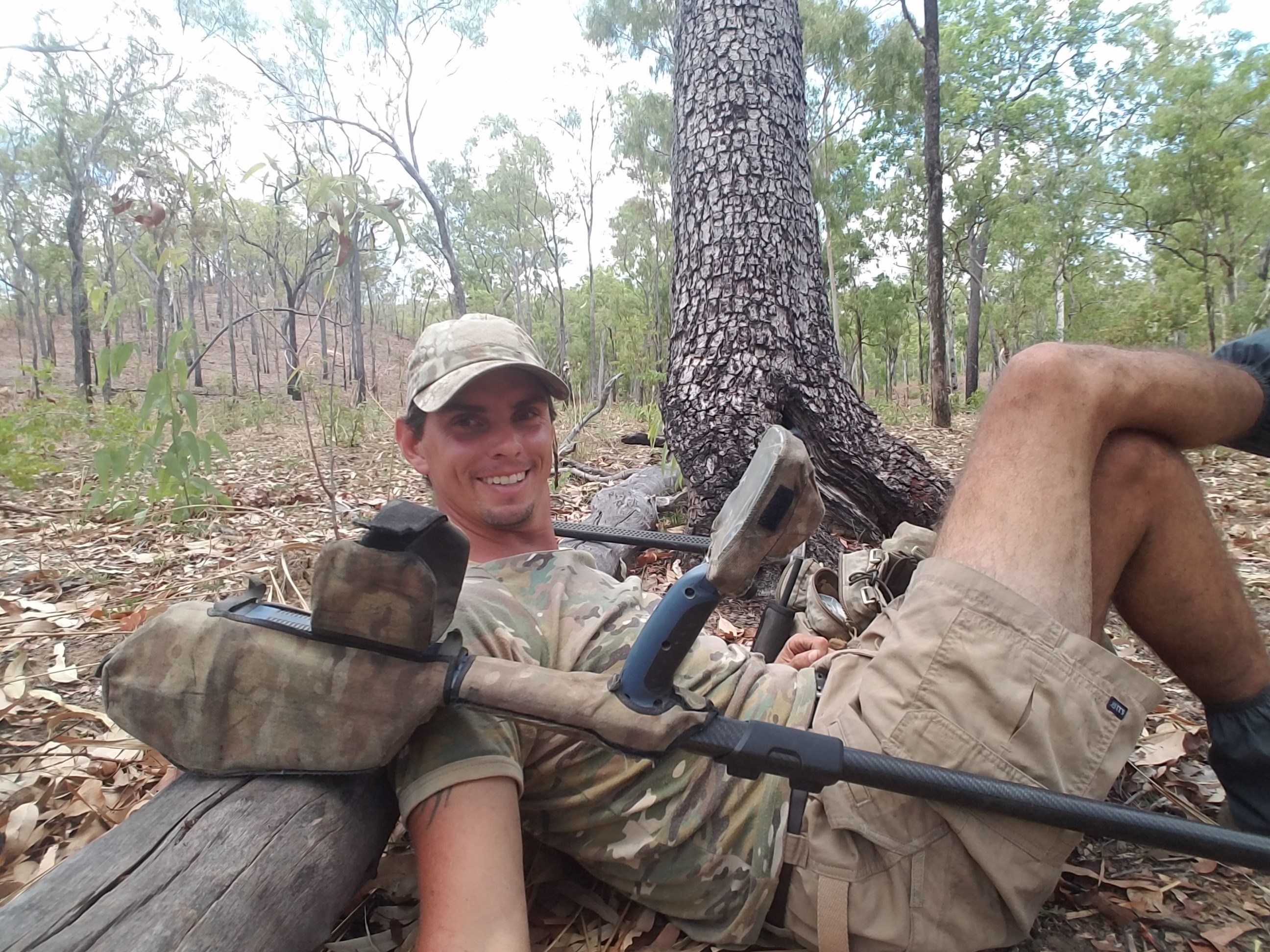

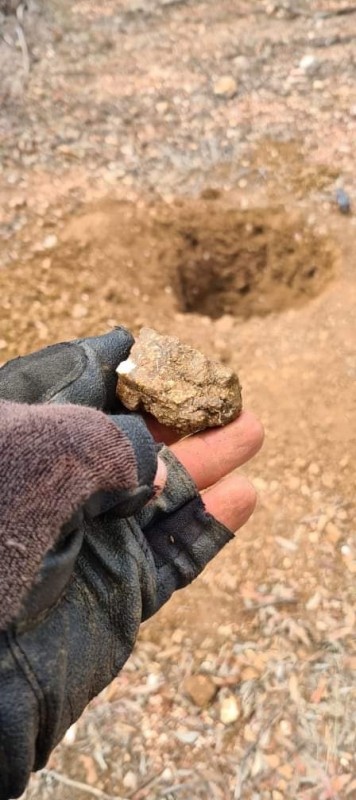
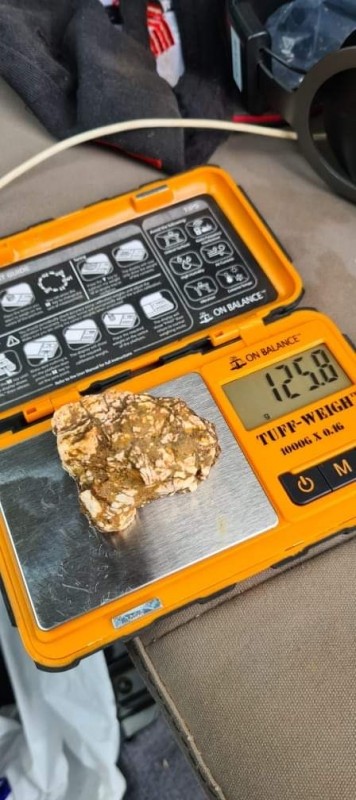
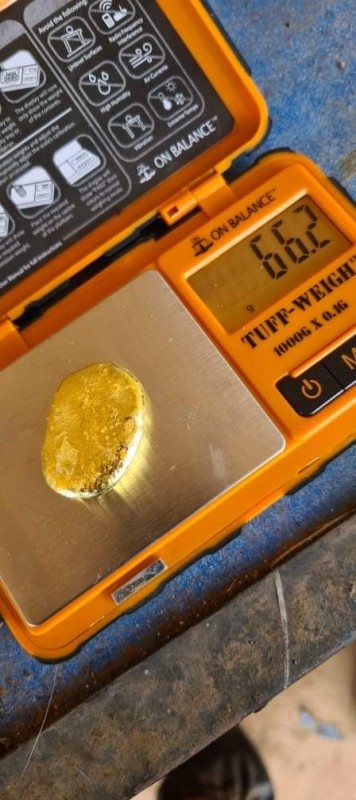
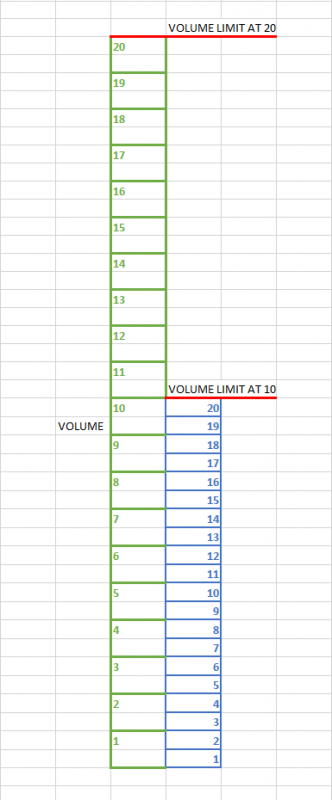
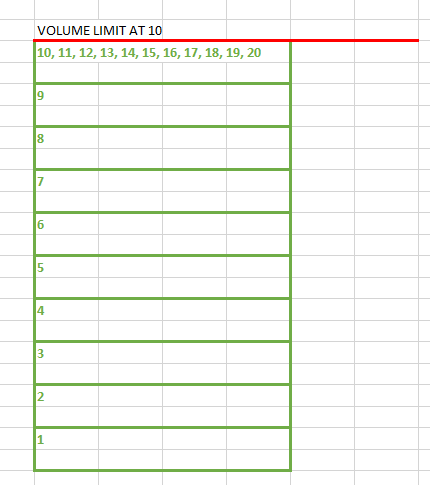
GPZ 7000: Threshold Vs Sensitivity Vs Volume Vs Volume Limit (with Discussion On Audio Smoothing, Coil Control, Range Of Motion And Manual Ground Balance)
in Detector Prospector Forum
Posted
I also use range of motion to filter out ground signals, by slowing or speeding my range of motion over suspicous targets I can test the target to see if its worth digging. Which saves me quite a lot of waisted time in digging false targets and allows me to run normal in some pretty trying ground.